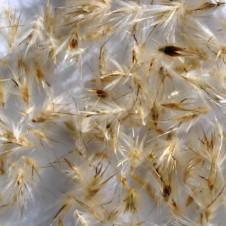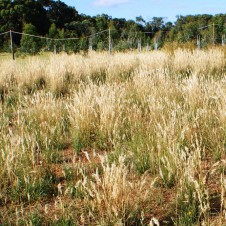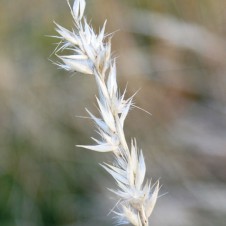General Description: A tufted, narrow-leafed, perennial grass with erect flower stem to 80 cm tall with clusters of bristly flowers. Ligule a collar of hairs about 0.5 mm long with marginal tufts to 3 mm long. The leaves form a tussock and are narrow and long, to 50 cm in length.
Flowers and Fruit: Flower stems have 3 to 6 flowers on medium stalks. Seeds are fluffy as is characteristic of all Wallaby grasses. Flowers from September to February.
Site Preference and Tolerances: Dry and valley forests and red gum woodland, prefers well drained soils. This grass is very hardy and persistent. If in a garden, old tussocks can be rejuvenated by pruning severely or even burning and watering afterwards.
Life Span: This is a perennial grass so will grow for many years and should continuously replace itself from seed.
Wildlife Value: The Red-browed Firetail and other grass finches feed on the small seeds and the fallen seed heads. Valued for its persistence, palatability and productivity, it is a food source of the Golden Sun Moth and is eaten by seed eating fauna.
Other Values and Uses: This is an attractive medium height fluffy grass which would make a great addition to any native planting. Flower spikelets are silvery, often with a purple tinge with fine foliage. Suitable for rockery and wildflower areas in gardens. Useful on groundwater recharge areas.
Other Scientific Names: Austrodanthonia tenuior, Danthonia purpurascens, Danthonia semiannularis var. browniana p.p., Danthonia tenuior, Notodanthonia purpurascens, Notodanthonia tenuior, Plinthanthesis tenuior, Rytidosperma tenuis
Germination Information: Usually grows well in a few weeks without any treatment.



